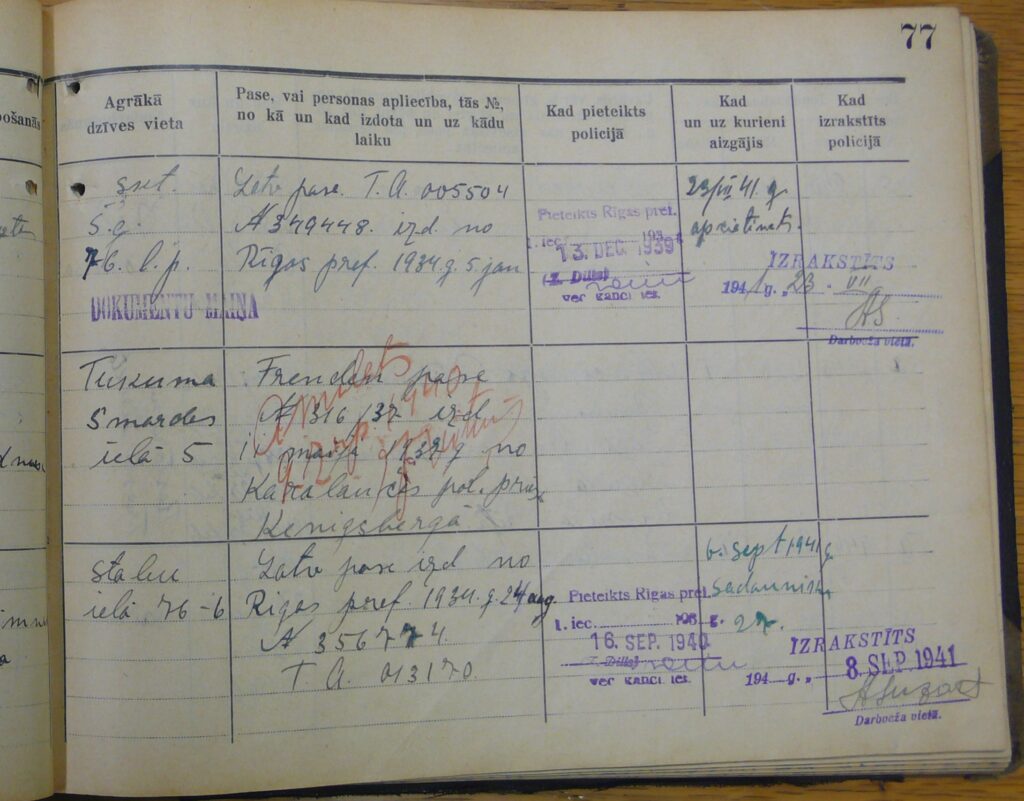
Anti-Jewish persecution of Jews in Riga, 1941-1944
Eric Le Bourhis
Description only available in French
Illustration : Historical archives of the Letvian State.
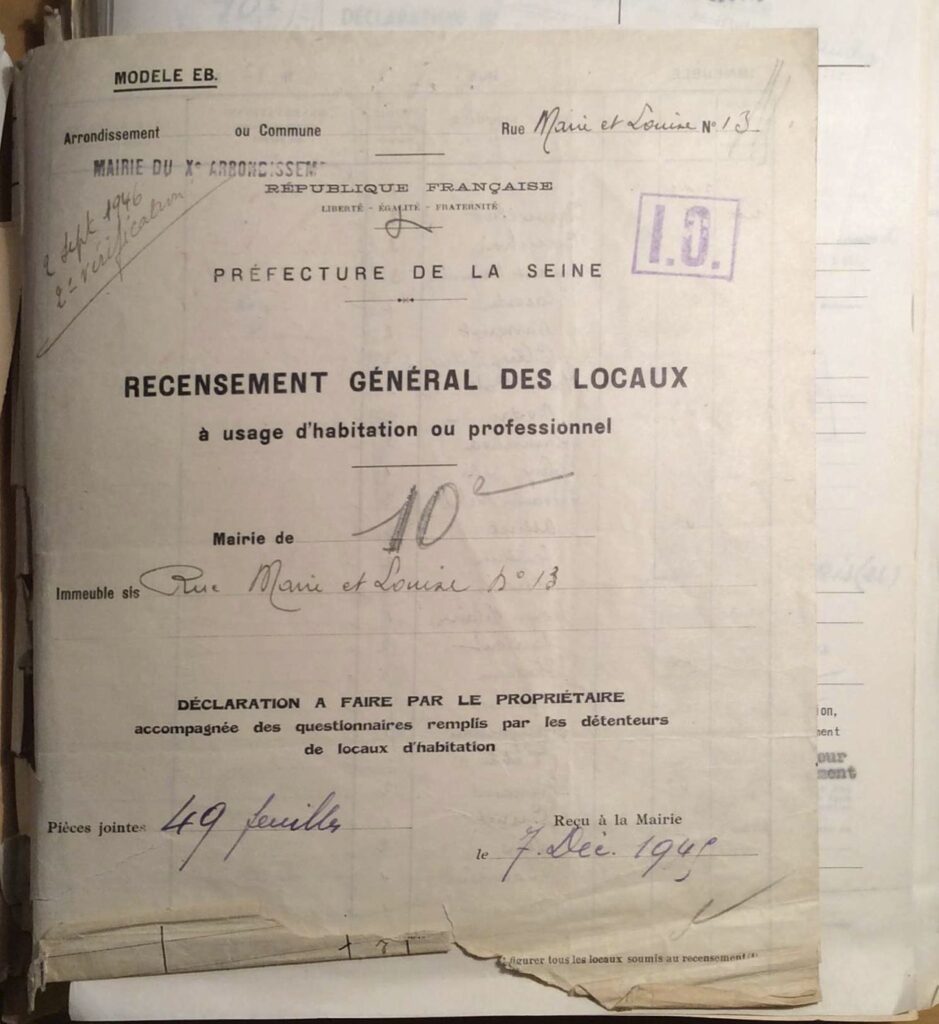
A Parisian street and its inhabitants (1936-1948)
Sarah Gensburger
Description only available in French
Illustration : Fichier immobilier, Archives de Paris, 3966W
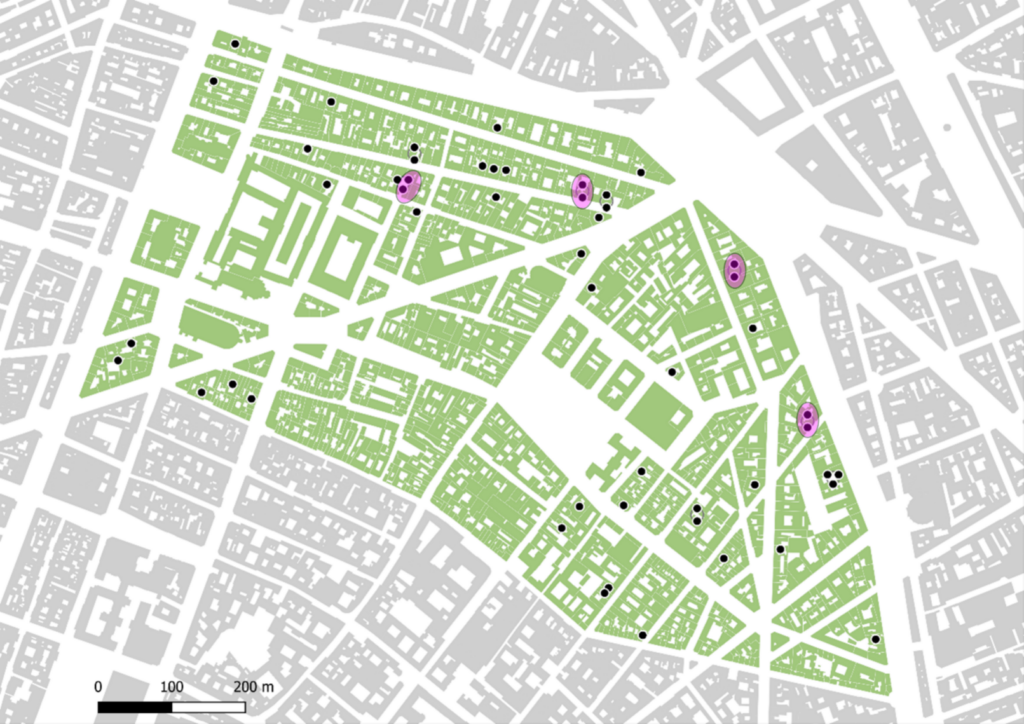
The space of witnessing: The city of Paris and the Holocaust
Maël Le Noc et Sarah Gensburger
While Paris was the main place of arrest in Western Europe during the Holocaust, it is very rarely represented as a place having played a part in the extermination of Jews. In harmony with the image of Paris as the world capital of the arts, most of the movies and novels dealing with the Holocaust in the city have mainly painted Paris as a décor for the Nazi looting of masterpieces owned by Jewish art collectors. However, more than half of the 76,000 Jewish people deported from France, mainly immigrants and of poor economic condition, lived in Parisin 1940 and were arrested in the streets of the city. Tackling this discrepancy, and crossing geography, micro-history and memory studies, this research raises the following question: to what extent space and the way it is represented have been social frameworks of memory? To answer it, we study, from a spatial perspective, almost 1200 testimonies given to the Shoah Foundation by Jews who were living in Paris at the beginning of the German Occupation. Firstly, we intend to map the localization of the witnesses comparatively with other datasets relevant to the study of anti-Jewish persecution in Paris and its memorialization. This approach enables us to highlight what witnessing does to space. Secondly, we use a more qualitative approach to grasp the role of place in the narration of the past by witnesses, enabling here the study of what space does to witnessing.
Illustration : Localization of testimonies in the 3rd arrondissement
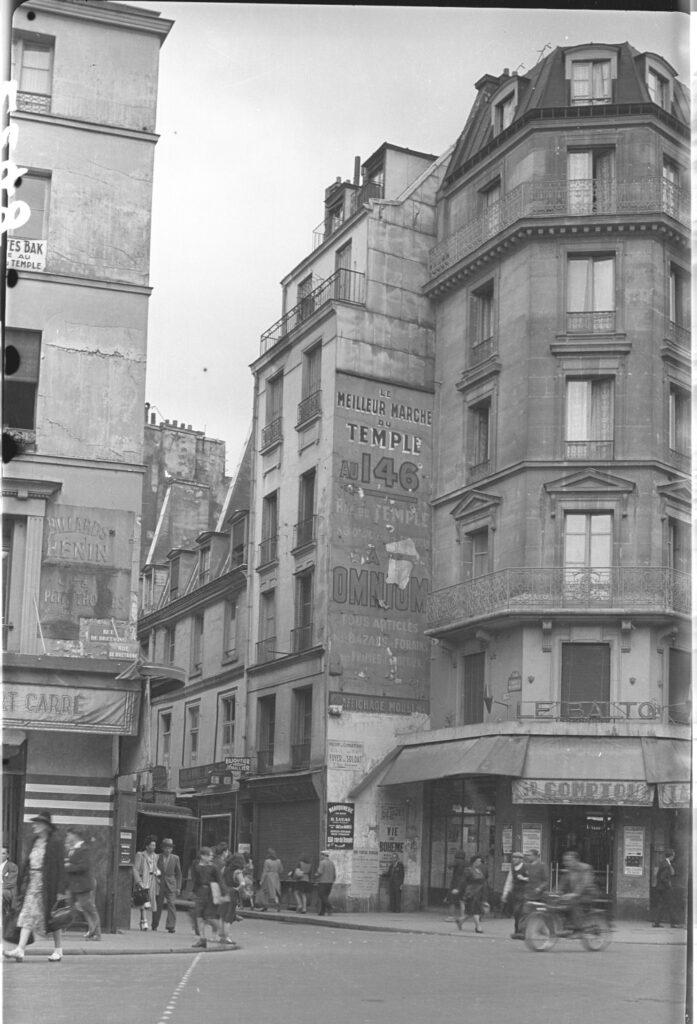
A spatial approach of the post-Holocaust period in Paris : The case of the Arts-et-Métiers and Enfants-Rouges quarters, 1944-1946.
Maël Le Noc
This research project, at the cross-road between geography and history, investigates the (re)inhabiting of the Parisian urban space by Jews after the end of persecutions, the cohabitation with non-Jews nearby residents, as well as the return, in their neighborhoods and their homes, of the Jewish families who come back. The study is organized around the following research questions: How has urban space been durably marked and transformed by racial persecution? How do Jewish families re-appropriate and re-inhabit the everyday urban spaces where they live after the Shoah? How do Jewish and non-Jewish populations (re-)cohabit then? The study being conducted is resolutely empirical. It focuses on two Parisian quarters and it relies both on quantitative and qualitative approaches, based on archival sources and testimonies.
The research is structured by three axes, each dealing with a specific aspect of interaction between urban space and Jewish populations. The first axis concerns the demography of the local Jewish population after the Liberation. The second axis deals with the practices and perceptions of urban space by the Jews after the end of persecutions. The third axis focuses on relationships and social interactions taking place in the quarters being studied.
Illustration : 161-163 Rue du Temple, Août 1945, Direction urbanistique de la ville de Paris
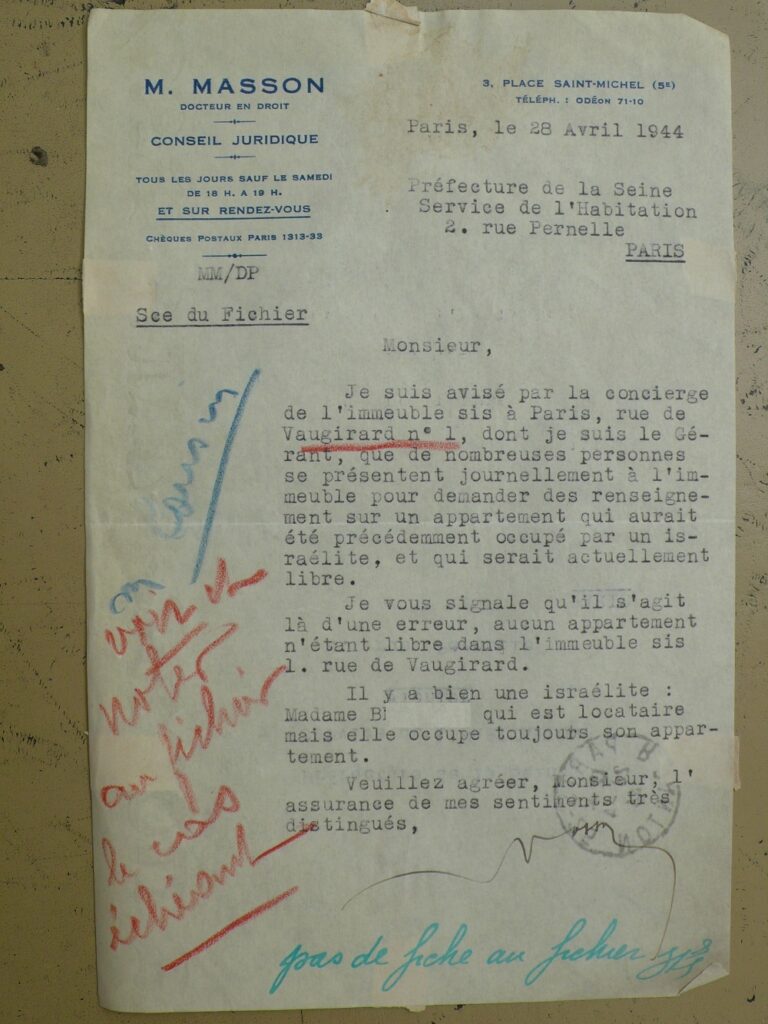
Dispossession of Jews and re-housing of bombing victims : Préfecture de la Seine‘s negative social policy, 1942-1946
Isabelle Backouche, Sarah Gensburger and Eric Le Bourhis
A passion for archival research and the discovery of a gap in studies related to Jewish fates in the Paris region during the Occupation launched our study of rental housing. While trying to identify rehousing solution for residents expelled from “Unsanitary District Number 16,” we discovered a document collection that had not yet been consulted at the Paris Archives: files (under the direction of the Seine Prefecture) for more than 9,000 “Israelite Premises” (sic) reallocated to new, non-Jewish tenants in 1943-1944. This study seeks to examine the motivations for this local spoliation policy, the various actors involved, and the postwar trajectories of the Jewish families deprived of lodging. Absence and return are examined through the prism of housing as a way to inscribe the analysis of persecution in space and to reevaluate the importance of home for Parisian Jews.
Illustration : Archives de Paris, 133 W
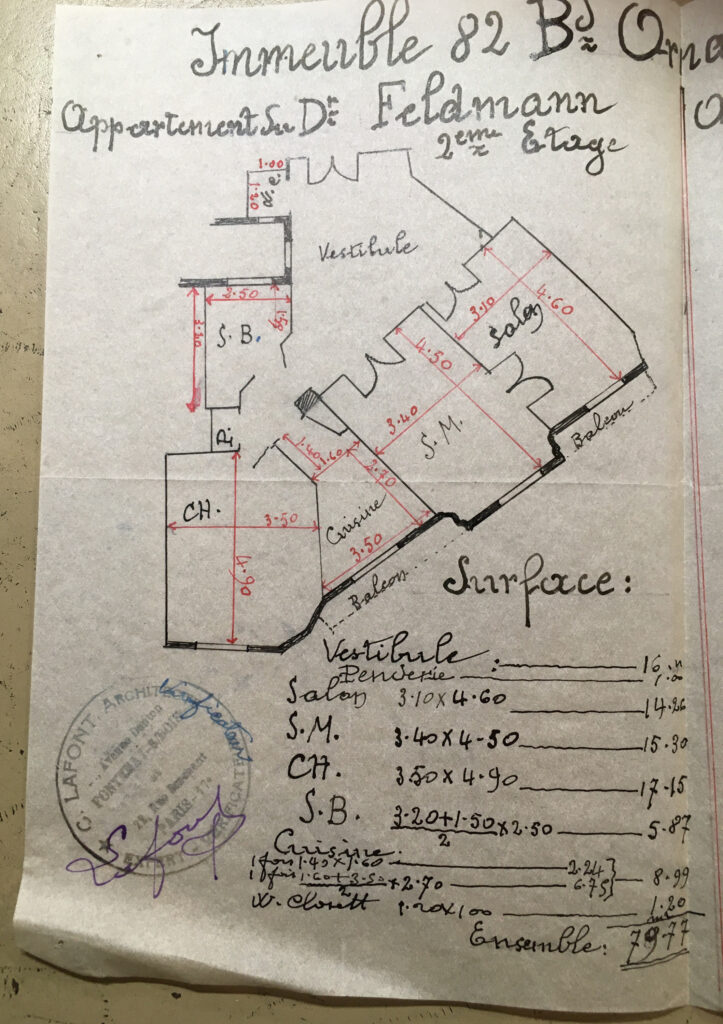
Requisition of Housing and Dispossession of Jews: Overlapping and differenciation of Procedures (Paris, 1940-1946)
Isabelle Backouche and Eric Le Bourhis
This study investigates the use of the catch-all category of “requisition” by French and German authorities in the dispossession (temporary or definitive) of the housing of Parisians (Jews and non-Jews) from 1940 onwards. The successive re-characterizations, following the evolution of the various dispossession procedures, and then the restitution and the archival choices, have obfuscated the terms “réquisition / Beschlagnahme” (used by the actors of the dispossession) on the one hand, and “spoliation” (used retrospectively to qualify the dispossession of the Jews’ assets) on the other. Such confusion contributed to the invisibility of the dispossession of the Jews in the archival collections labeled as “Réquisitions.” This investigation undertakes to disentangle the various, independent dispossession procedures, as well as the qualification of dispossession of the Jews as it was implemented and after the Liberation of 1944. Based on a substantial archival corpus, kept in the Paris Archives Départementales, the (French) National Archives, the German Federal Military Archives and municipal archives, the study aims to comprehend how the successive actors’ logics were articulated over the months, and how they handled and tinkered with the category of requisition, the only one available, yet ossified by legal texts.
Illustration : Archives de Paris, 6096/70/1, carton 657
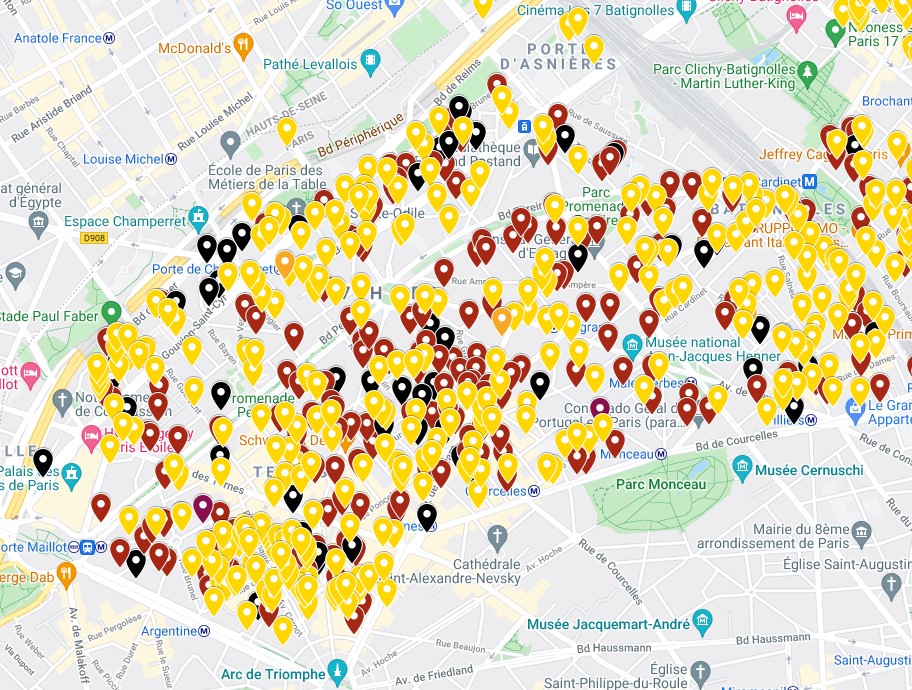
The Ghetto-less City : Place and Persecution in Wartime Paris
Shannon Fogg
This project focuses on the geography of the Holocaust in Paris, which remains an understudied site in Holocaust studies even though it was the largest German-occupied city in Europe during World War II. Using a multi-scalar approach focused on private homes, I examine the patterns of exclusion in the city from material and social perspectives. Based on more than 6000 postwar restitution claims, my research demonstrates that patterns of expropriation did not align exclusively with patterns of arrest and deportation, revealing the depth and breadth of persecution in the city – even without the creation of formal ghettos.
Examining physical space in tandem with individual experiences is vital for understanding the implementation of the Holocaust in France. Using concepts from geography, urban history, social history and memory studies, this project argues for the importance of studying housing in ways that go beyond ghettoization as a top-down process or as a physically distinct space. Instead, persecution was dispersed in the landscape, facilitated by the French bureaucracy and ordinary citizens, and often remained centered around homes. The process for reclaiming these homes was also framed by space, further highlighting the role of geography in understanding the Shoah.
Illustration : “Looted Apartments and Deportees’ Home Addresses – 17th arrondissement”, map by Shannon Fogg